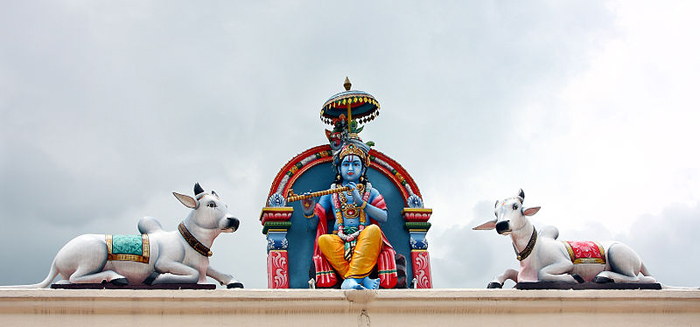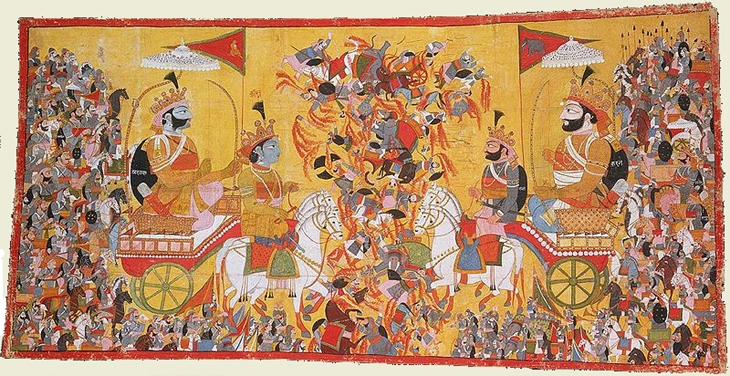Objective: Answer all the questions and look up all the vocabulary in these reading guides in order to prepare for the quizzes.
|
Reading Guide to Bhagavad-Gitā
Introduction to the "Bhagavad-Gitā"
Common Vocabulary in the Intro to "Bhagavad-Gitā"
disenfranchise
annul
epiphany
egalitarianism
Technical Vocabulary in the "Bhagavad-Gitā"
theophany
icon |
|
Cultural References in and for "Bhagavad-Gitā"
dharma
karma
Shiva
Krishna
atman
brahman/brahmin
yoga
bhakti
|
Questions from the Annenberg Resources -- Timeline and Video
How old is the the "Bhagavad-Gitā"? Is it older or younger than the Torah?
Who's the hero of this scripture and what party does he belong to?
What's the basic plot or setting of the work of which this the "Bhagavad-Gita" is a part?
Why doesn't Arjuna want to fight?
What's the basic explanation for why he should fight?
What does "Bhagavad-Gita" mean?
Who or what is Krishna?
How have these Hindu ideas influenced Indian culture?
The "Bhagavad-Gitā": Sixth and Eleventh Teaching
Common Vocabulary
immutable
mace
primal
|
|
Sixth Teaching
What does the word "yogi" mean?
How high is the seat should a yogi fix for himself?
Mentally, the yogi is to do what?
Physically, what is the yogi supposed to do -- where look, how sit, etc.?
Some folks cannot acheive the discipline: What 4 named groups cannot and why can they not acheive the discipline?
What figure of speech [simile] is used to describe the state of mind of the perfect yogi?
What is the Sanskrit word for "infinite spirit"?
When does one know that they have acheived "pure discipline"?
Eleventh Teaching
Where does Arjuna see "oneness"?
What does Krishna give to Arjuna so that he can see?
How does Hindu iconography reflect the form which Krishna reveals to Arjuna?
How is bhakti illustrated in lines 44 and following?
Arjuna is so overwhelmed that he asks Krishna to revert to his familiar form: How are the two forms different?
Who else, besides Arjuna, has seen Krishna's primal form?
What activities will not make it possible to see Krishna's cosmic form?
What's the one thing that will make that form available?
What one line near the end of the Eleventh Teaching might Mahatma Gahandi have focused on as the central theme of his reading of the "Bhagavad-Gita" and why might that line have been important to him?

|

